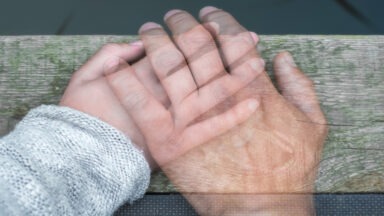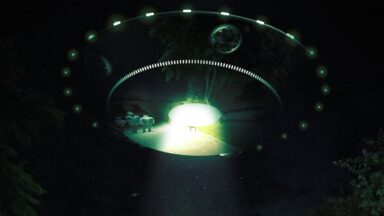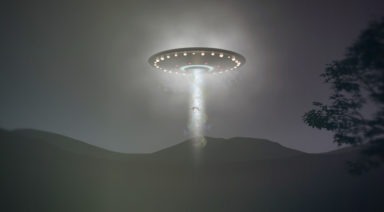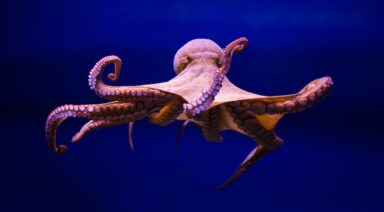US Navy Announces New Rules for Pilots to Report UFO Encounters

If there’s one thing we learned from the 2017 revelation of the Pentagon’s AATIP (or AAWSAP) program that studied military encounters with UFOs, it’s that they seem to happen a lot more often than we’ve been told.
And now that this unexplained phenomenon has become public knowledge, it seems the stigma surrounding them has lessened, as the Navy announced new guidelines this week for pilots to report encounters with unidentified craft.
Luis Elizondo, the former official who ran the $25 million Pentagon program studying unidentified aerial phenomena (UAPs), has been one of the louder voices attempting to attract public attention to the sheer number of cases encountered by naval pilots, as well as the lack of protocol in place for filing official reports.
“If you are in a busy airport and see something you are supposed to say something,” Elizondo said in an interview with Politico. “With our own military members, it is kind of the opposite: ‘If you do see something, don’t say something.'”
Much of the press around Elizondo stems from his involvement with To The Stars Academy (TTSA) – the research/entertainment/disclosure venture ostensibly seeking to prove the existence of extraterrestrials and their link to these unidentified craft – with its founder Tom Delonge claiming credit on Instagram for the recent change in the Navy’s policy.
According to Delonge, the Navy’s announcement is a direct result of his group’s efforts working “at the highest levels of the Navy, DOD and other Agencies to help create an architecture for dealing with the reality and National Security issues related to UFOs,” he said. “And yes, this is an admission by the NAVY that these Unidentified Aerial Vehicles are real.”
In its press release reported by Politico, the Navy even went so far as to admit that UFOs have been spotted and tracked in controlled military test sites.
“There have been a number of reports of unauthorized and/or unidentified aircraft entering various military-controlled ranges and designated air space in recent years,” the Navy said.
But despite the extraterrestrial connection most people’s minds jump to when discussing these UAPs, UFOs, or whatever we’re calling them these days, Elizondo is always careful to frame the situation in terms of national security – likely one of the reasons the topic is now being taken so seriously. He still maintains that no one knows what these unidentified craft are, but that they deserve attention in the event it could be highly advanced technology owned by one of the U.S.’s earthly adversaries.
According to Elizondo, pilots often refrain from reporting them because they “don’t have a tail number or a flag — in some cases not even a tail — it’s crickets. What happens in five years if it turns out these are extremely advanced Russian aircraft?”
It’s now been nearly a year and a half since the New York Times first reported cases involving naval pilots’ encounters and aircraft carriers being stalked by UAPs for weeks at a time. The fact that these stories are still getting attention from the mainstream media, and branches of the military are rewriting policies, speaks to how real the phenomenon is.
Unsurprisingly, the Navy refuses to admit that its pilots have encountered extraterrestrial craft – it simply says it doesn’t know what they are. But would the Navy ever tell us what it is their pilots are encountering, even if it did know? Probably not.
Gaia show host and SSP insider Emery Smith, told us he doesn’t believe this will necessarily lead to any type of significant public admission from the Navy. “This is a really positive thing, the military stepping up and letting the public know that they’re going to be allowing pilots to report this. Even though they say that, I still don’t believe they’ll disclose much information to the public, unfortunately.”
What We Learned From the Latest Congressional UFO Hearing

The first public UFO hearing on Capitol Hill in more than 50 years was held this past week — here’s what we learned and what was left out…
A historic public hearing this week on Capitol Hill, as the Counterterrorism, Counterintelligence, and Counterproliferation Subcommittee held the first open UFO hearing since 1966. This hearing came after some lawmakers were reportedly not impressed by the classified briefings they had received as part of the National Defense Authorization Act (NDAA).
In his opening statement, Deputy Director of Naval Intelligence Scott Bray, said, “We have seen an increasing number of unauthorized and/or unidentified aircraft or objects in military-controlled training areas, training ranges, and other designated airspace. Reports of sightings are frequent and continuing.”
He went on to say that one of the reasons they have more reports is their work to destigmatize the idea of reporting UFOs and putting into place a system to report them. Despite there being no major revelations, there were several moments to note in the hearing.




































